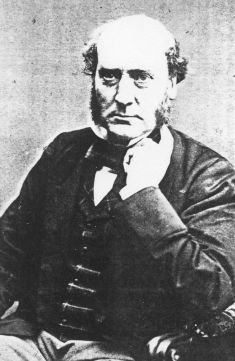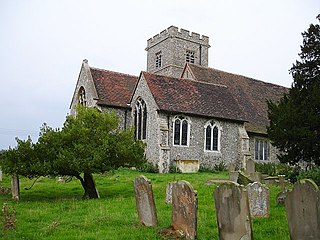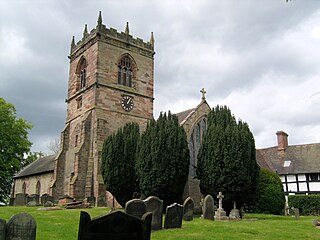Related Research Articles

Sir George Gilbert Scott, largely known as Sir Gilbert Scott, was a prolific English Gothic Revival architect, chiefly associated with the design, building and renovation of churches and cathedrals, although he started his career as a leading designer of workhouses. Over 800 buildings were designed or altered by him.
Thurstan or Turstin of Bayeux was a medieval Archbishop of York, the son of a priest. He served kings William II and Henry I of England before his election to the see of York in 1114. Once elected, his consecration was delayed for five years while he fought attempts by the Archbishop of Canterbury to assert primacy over York. Eventually, he was consecrated by the pope instead and allowed to return to England. While archbishop, he secured two new suffragan bishops for his province. When Henry I died, Thurstan supported Henry's nephew Stephen of Blois as king. Thurstan also defended the northern part of England from invasion by the Scots, taking a leading part in organising the English forces at the Battle of the Standard (1138). Shortly before his death, Thurstan resigned from his see and took the habit of a Cluniac monk.

Denny Abbey is a former abbey near Waterbeach, about 6 miles (10 km) north of Cambridge in Cambridgeshire, England. It is now the Farmland Museum and Denny Abbey.

Alien priories were religious establishments in England, such as monasteries and convents, which were under the control of another religious house outside England. Usually the mother-house was in France.

Priory Church of St Mary, Bridlington, grid reference TA177680, commonly known as Bridlington Priory Church is a parish church in Bridlington, East Riding of Yorkshire, England, in the Diocese of York. It is on the site of an Augustinian priory founded in 1113 which was dissolved during the Dissolution of the Monasteries. In 1951 it was designated a Grade I Listed Building.

Mount Grace Priory is a monastery in the parish of East Harlsey, North Yorkshire, England. Set in woodlands within the North York Moors National Park, it is represented today by the best preserved and most accessible ruins among the nine houses of the Carthusian Order, which existed in England in the Middle Ages and were known as charterhouses.

Bermondsey Abbey was an English Benedictine monastery. Although generally regarded as having been founded in the 11th century, it had a precursor mentioned in the early 8th century. It was centred on what is now Bermondsey Square, the site of Bermondsey Market, Bermondsey, in the London Borough of Southwark, southeast London, England.
Folkestone Priory was a pre-Reformation Benedictine monastery at Folkestone in the English county of Kent. The priory church survives as the present parish church. It was the successor to Folkestone Abbey, an Anglo-Saxon nunnery on a different site.

Edington Priory in Wiltshire, England, was founded by William Edington, the bishop of Winchester, in 1351 in his home village of Edington, about 3+3⁄4 miles (6 km) east of the town of Westbury. The priory church was consecrated in 1361 and continues in use as the parish church of Saint Mary, Saint Katharine and All Saints.

Beauvale Priory was a Carthusian monastery in Beauvale, Nottinghamshire. It is a scheduled ancient monument.

Throwley is an English village south of Faversham in the Borough of Swale in Kent. The name is recorded in the Domesday Book as Trevelai, which corresponds with a Brittonic origin, where "trev" means a settlement or farm house and "elai" typically relates to a fast moving river or stream. In 2011 the parish had a population of 300.

Hatfield Broad Oak Priory, or Hatfield Regis Priory, is a former Benedictine priory in Hatfield Broad Oak, Essex, England. Founded by 1139, it was dissolved in 1536 as part of Henry VIII's dissolution of the monasteries.

Stogursey Priory, also called Stoke Courcy Priory or The Priory of St Andrew de Stoke, was a Benedictine alien priory dedicated to St Andrew at Stogursey in Somerset, England. It was founded by William de Falaise, around 1100, to become a cell of Lonlay-l'Abbaye in Normandy. In around 1185 John de Courcy, its hereditary patron, founded the Priory of the Ards (Blackabbey) in County Down, Ireland, making an endowment of that estate to Stogursey Priory. The priory church survives as the parish church, and contains some of the original Norman architecture. Many of the priory's muniments are held in the archives of Eton College, which King Henry VI endowed with the appurtenances when the house was dissolved in about 1440.
Modbury Priory was a Benedictine priory in the parish of Modbury, Devon, England, established before 1129 which was one of the longest surviving alien priories in England, most of which were suppressed in 1414. It was located close to the present parish church of St George in the town of Modbury, but its exact location is unclear.

Pamber Priory is a Church of England parish church and former priory, then known as West Sherborne Priory or Monk Sherborne Priory, at Monk Sherborne in the English county of Hampshire.
Ruislip Priory was a priory in Middlesex, England. In 1086 or 1087 the manor of Ruislip was given to Bec Abbey by Ernulf de Hesdin. An administrative centre, it had a priory before 1200. In the early 13th century the administration of Bec's manors was shared with Ogbourne Priory in Wiltshire. As one of the alien priories, Ruislip shared their varying fortunes. Ruislip was always a manor-house rather than having conventual buildings. After 1404 the manors were reallocated, Ruislip going to St Nicolas College, Cambridge. St Nicolas College was later renamed King's College.

Lapley Priory was a priory in Staffordshire, England. Founded at the very end of the Anglo-Saxon period, it was an alien priory, a satellite house of the Benedictine Abbey of Saint-Remi or Saint-Rémy at Reims in Northern France. After great fluctuations in fortune, resulting from changing relations between the rulers of England and France, it was finally dissolved in 1415 and its assets transferred to the collegiate church at Tong, Shropshire.

Monks Kirby Priory was a Benedictine priory established in 1077 in Monks Kirby, Warwickshire, England. The priory was suppressed in 1415 when its estates and revenues were given to the Carthusian priory of Axholme in Lincolnshire, in whose possession they continued until the Reformation. Remains of the priory form part of Monks Kirby village church today.
References
- 1 2 Edward Hasted (1798). Parishes: Throwley. Institute of Historical Research. pp. 445–461. Retrieved 18 March 2014.
{{cite book}}:|work=ignored (help) - 1 2 "Throwley Priory". English Heritage. 2007. Retrieved 18 March 2014.
- 1 2 3 4 5 Page, Willam, ed. (1926). Alien houses: The priory of Throwley. Institute of Historical Research. pp. 239–240. Retrieved 18 March 2014.
{{cite book}}:|work=ignored (help)